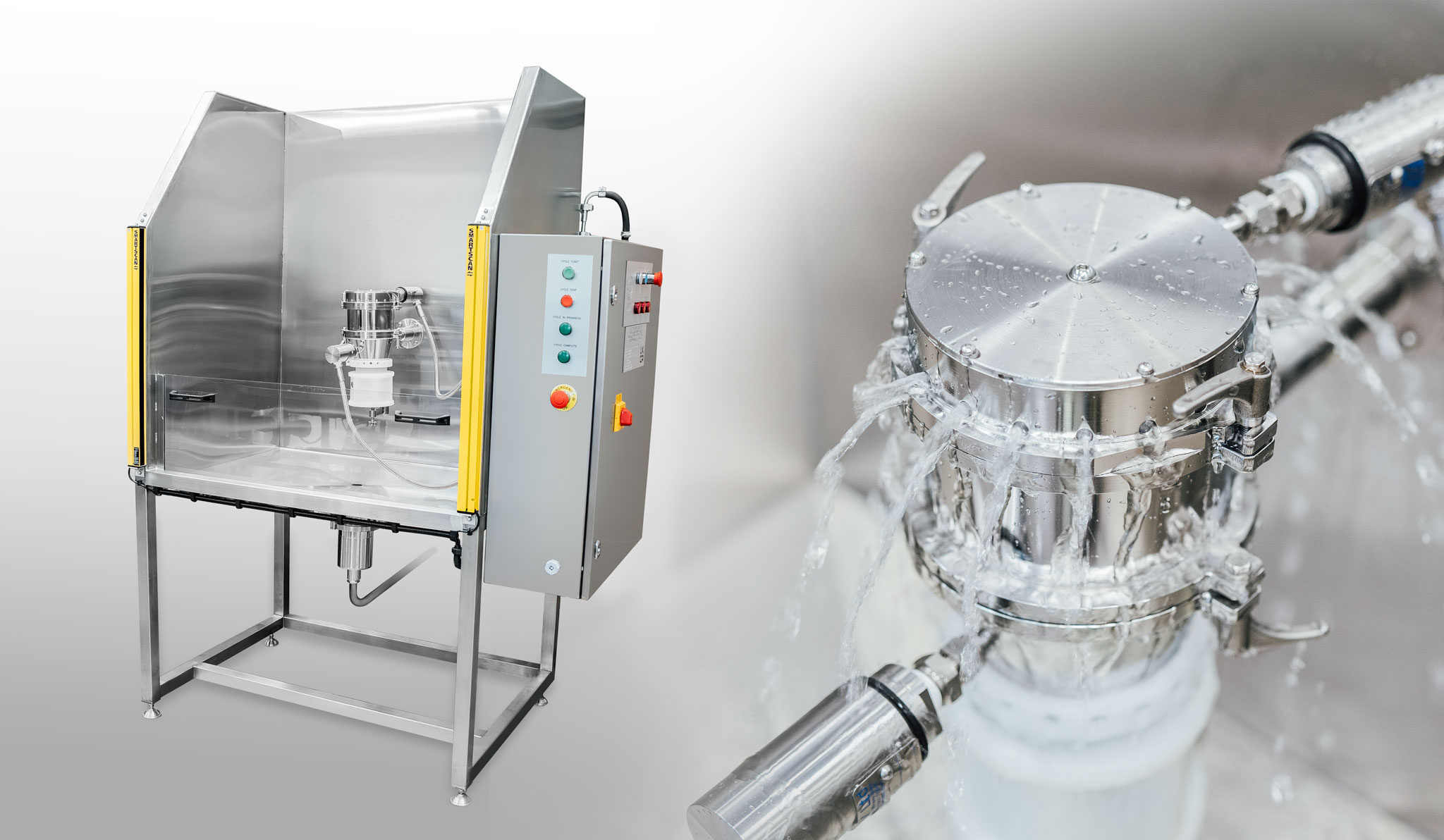Medical Devices – Validating your outcome
As a Provider of products and services to the Healthcare Sector, an essential part of your role will be your ability to satisfy the rigorous demands of Federal Agencies and other Governmental Controls which stand between you and your customer.
The demands of this sector are unique due to the rightly imposed restrictions through rigorous process analysis and validation which are audited by independent and legislative third party agencies. Any change or development to a production process is a costly, time consuming and risky business when cleaning to FDA, 21 CFR Part 820, Eudraelex-EU or EN-13485 regulations.
Fluid processes will form a vital part of your production audit and product quality so the ability to develop or retain required outcomes, including chemistry choice is essential. Additionally process control parameters and process capability are critical to ensuring product conformance.
You will need to put into place set residue limits and a critical cleaning validation procedure. Any residue whether particulate or chemical—in a medical device environment involves: the process fluids, polishing compounds, mould releases, bio-burden, endotoxins, cleaning agents and any degradation or interaction products and cleaning must remove these to set residue limits within a cleaning validation procedure.
The acceptance criteria are set based on potential for the residue to effect biocompatibility, toxicity, or functionality of the finished device. The acceptance limits chosen should be achievable, logical and scientifically justifiable.
To meet these demands and provide business success will require an in depth understanding of your sectors manufacturing techniques and audit requirements with vendor partnership over the long term being an essential necessity.

Medical device cleaning machine showing a custom designed handling system that uses pressurised water flow and filters to clean products.
YOUR CHALLENGE
To constantly improve and maintain your quality audit procedures through validated processes which are environmentally compliant, cost effective, repeatable, reliable and long lasting.
YOUR SOLUTION
Through partnership and in-depth consultation with you, including planning, testing and review, the team from Layton will design and develop a tailored system to meet the demands of your auditors and exceed your expectations.
At Layton, we don’t sell machines we validate your outcome - below are some case studies to understand how we have helped companies achieve this.
Case Study 1: Lens Component Cleaning Equipment - Implantable ophthalmic medical devices in combustible solvents
Automatic cleaning of implantable lenses an ophthalmic medical device, utilizing a combustible chemistry with a high vapor pressure in an intrinsically safe system installed in a normal engineering environment.
This system uses both ultrasonic and mechanical agitation combined with heated solvent to achieve the stringent cleanliness requirements of medical standards for surgically implanted devices using component cleaning equipment.
Case Study 2: Resin removal from glass moulds using IPA (Isopropyl alcohol) spray
The system is designed to remove uncured resin from small glass moulds involved with the manufacture of implantable lenses.
The system uses sprays of increasingly clean and pure IPA (Isopropyl alcohol) and uses a combination of the agitation of the sprays and magdrive to promote centripetal force to remove contamination and excess solvent to produce a clean dry mould ready for re-use.
Due to the design of the solvent flow the system recycles the solvent therefore reducing waste and solvent usage all combined in a system that is intrinsically safe and installed in a normal engineering environment.
Case Study 3: 10-stage aqueous cleaning and passivation system.
Layton Technologies, has been working closely with an Ireland based company specializing in precision engineering applications such as orthopaedics, vascular procedures, oncology and surgical devices to install new controlled cleaning process capacity to meet the growing demands and high cleaning standards of the medical device manufacturing industry.
Based in Ireland - the international medical devices manufacturing hub, the company has developed a reputation for providing high quality precision engineered products and excellent service to leading medical device companies internationally. With such a high reputation at stake, it was critical that they take extreme care when choosing a partner to help it enhance important elements of its manufacturing processes.
After meticulous investigations and research into alternative suppliers and systems, the company placed its trust in Layton Technologies who demonstrated the technical superiority of their adaptive component cleaning systems and an intuitive understanding of the client’s needs. Both parties knew that the end goal would be a challenging one to achieve, but the journey proved to be worthwhile after trials, testing and evaluation cumulated in a solution that is proving beneficial all round.
Due to the critical nature of the cleaning process in the manufacturing cycle, it was essential for the business to claim complete control for every element of it. Working closely with Layton’s design engineers, the company was able to specify the particulars of its requirements which were then translated into the processes and machinery now in use.
The resultant 10-stage aqueous cleaning and passivation system, Bluestream, designed, manufactured and installed by Layton is helping to continuously improve its manufacturing efficiencies and offer additional services to its clients. Furthermore, the Irish component supplier is now able to self-validate its cleaning services, affording customers even greater peace of mind and instilling yet more confidence in its already stringent quality standards.
Phil Dale, MD of Layton Technologies, explained how every machine Layton produces is a bespoke item of engineering tailored exactly to the client’s needs and that each machine is unique, recognising that the demands of the medical device industry are arguably among the most exacting of any industrial sector where Layton operates.
‘While our customers have similar requirements, experience tells us that no two companies share the same process for achieving the same result. Our engineers and technicians understand our products, but must assimilate our clients’ needs in order to deliver the functionality, precision and reliability they demand. He added, ‘we’re delighted to be associated with a business with such a high reputation in this sector and will continue to push the boundaries of our own technological abilities to deliver great service and performance.’
